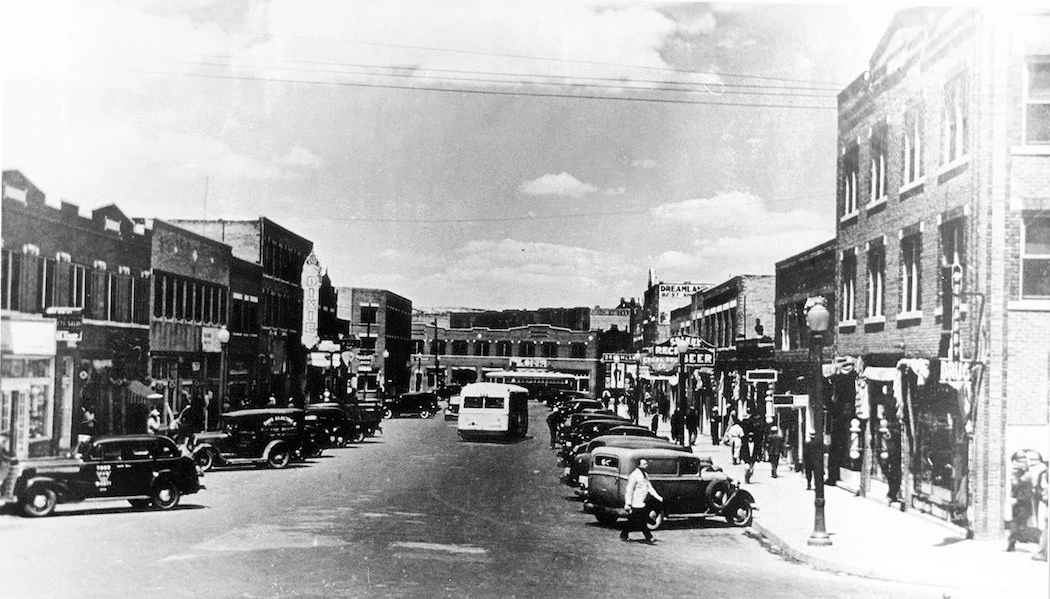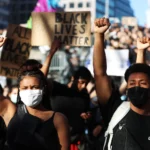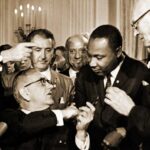In the early 20th century, a flourishing African American community emerged in the Greenwood District of Tulsa, Oklahoma, earning the moniker “Black Wall Street.” This economic powerhouse was a testament to the resilience and entrepreneurial spirit of the African American community during a challenging period in American history.
Origin and Founding
Black Wall Street was born out of necessity and innovation. In the early 1900s, racial segregation and systemic discrimination were rampant, pushing African Americans to establish their own communities. Greenwood, founded by O.W. Gurley, a wealthy African American landowner, became a haven for black entrepreneurs and professionals.
Achievements and Prosperity
Black Wall Street thrived in the early years, with a vibrant business district that included banks, hotels, theaters, and a multitude of successful enterprises. Notable figures like J.B. Stradford, a successful businessman, and Dr. A.C. Jackson, a prominent surgeon, played pivotal roles in the community’s prosperity.
Struggles and Challenges
The success of Black Wall Street was met with resistance and envy. In 1921, racial tensions escalated, culminating in the Tulsa Race Massacre. A violent white mob attacked Greenwood, resulting in the loss of lives, homes, and businesses. The massacre marked a dark chapter in American history, and the community struggled to rebuild in its aftermath.
Demise and Fallout
The aftermath of the massacre led to economic devastation. Insurance claims were denied, and the legal system failed to bring perpetrators to justice. The once-thriving Black Wall Street lay in ruins, and the community faced enormous challenges in rebuilding its economic foundation.
Existence Today and Recovery Efforts
While the physical remnants of Black Wall Street were decimated, the spirit endured. Efforts to rebuild were slow but steady, and the community demonstrated resilience. Today, there are ongoing initiatives to revitalize the Greenwood District and commemorate the legacy of Black Wall Street.
Top 20 Questions About Black Wall Street
1. What is Black Wall Street?
Black Wall Street refers to the Greenwood District in Tulsa, Oklahoma, where a prosperous African American community thrived in the early 20th century.
2. Who founded Black Wall Street?
O.W. Gurley, a wealthy African American landowner, played a pivotal role in founding the Greenwood District.
3. What businesses were on Black Wall Street?
The district boasted a variety of businesses, including banks, hotels, theaters, grocery stores, and successful enterprises owned by African Americans.
4. What led to the Tulsa Race Massacre?
Racial tensions escalated, fueled by resentment and jealousy over the economic success of the African American community, culminating in the violent attack on Black Wall Street in 1921.
5. How did Black Wall Street rebuild after the massacre?
Rebuilding efforts were slow due to insurance denials and a lack of legal recourse. The community persevered through grassroots initiatives and determination.
6. Does Black Wall Street still exist today?
The physical infrastructure was severely damaged, but the spirit of Black Wall Street persists. Efforts are underway to revitalize the Greenwood District.
7. Were reparations provided after the Tulsa Race Massacre?
Despite the extensive losses suffered, reparations were not provided to the victims of the Tulsa Race Massacre.
8. What role did prominent figures like J.B. Stradford and Dr. A.C. Jackson play?
J.B. Stradford and Dr. A.C. Jackson were instrumental in the success of Black Wall Street, contributing to its economic and cultural achievements.
9. How did the legal system fail Black Wall Street after the massacre?
Insurance claims were denied, and the legal system did not bring those responsible for the violence and destruction to justice, exacerbating the community’s struggles.
10. Were there educational institutions on Black Wall Street?
Yes, the community had its own schools, including the renowned Dunbar Elementary School.
11. What impact did Black Wall Street have on the national economy?
While primarily a local phenomenon, the success of Black Wall Street highlighted the economic potential within African American communities and challenged prevailing racist stereotypes.
12. How did the Tulsa Race Massacre affect the psyche of the African American community?
The massacre left deep scars, fostering mistrust in institutions and leaving a lasting impact on the collective memory of the African American community.
13. Were there any warning signs before the Tulsa Race Massacre?
Tensions had been escalating due to economic success and racial resentments, but the violence that unfolded exceeded any anticipation.
14. Did the federal government intervene during the Tulsa Race Massacre?
The federal government did not intervene effectively during the massacre, contributing to the extent of the destruction.
15. Were there any international reactions to the Tulsa Race Massacre?
International media covered the events, shedding light on racial violence in the United States and sparking conversations about racial injustice.
16. How did the destruction of Black Wall Street impact African American wealth?
The destruction had a long-lasting impact on African American wealth, erasing generations of accumulated prosperity.
17. Did the African American community receive any apologies for the Tulsa Race Massacre?
While there have been public apologies and acknowledgment of the tragedy, formal reparations for the victims’ descendants have not been provided.
18. Are there documentaries or films about Black Wall Street?
Several documentaries, books, and films, such as “The 24th” and “Tulsa: The Fire and the Forgotten,” highlight the history of Black Wall Street and the Tulsa Race Massacre.
19. How did the media portray Black Wall Street during its peak?
Despite prevailing racial prejudices, some media outlets recognized and celebrated the economic success of Black Wall Street.
20. What can we learn from the experience of Black Wall Street?
The rise and fall of Black Wall Street underscore the systemic racism and violence faced by African American communities. It emphasizes the importance of acknowledging historical injustices and working towards economic and social equity.
Lessons Learned and the Way Forward
The story of Black Wall Street is a poignant reminder of the resilience and strength of African American communities in the face of adversity. It prompts us to confront the systemic issues that led to its destruction and to actively work towards dismantling racial barriers. The way forward involves acknowledging historical injustices, supporting reparative initiatives, and fostering economic empowerment within marginalized communities. By learning from the past, we can strive to build a more just and equitable future for all.





